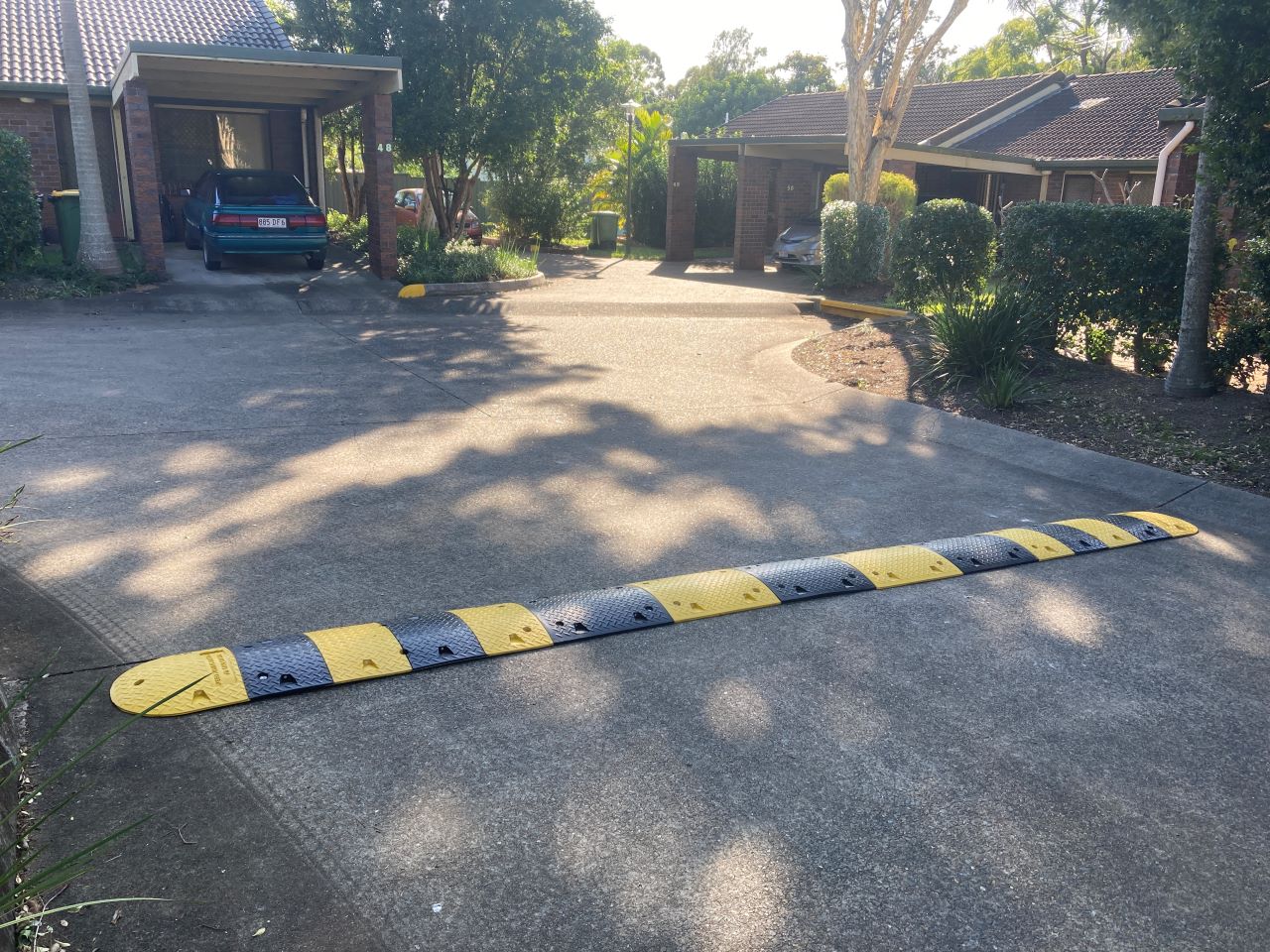When it comes to slowing down traffic, speed humps are a trusted solution. In Australia, flat-top speed humps are the standard, meeting the requirements outlined in the Australian Standard AS 2890.1:2004. However, in certain environments—like residential complexes, shopping centres, and service stations—flat-top speed humps might not always be the most suitable choice. Here’s why, along with a look at how rounded-top speed humps might be a more comfortable and effective alternative.
Understanding the Australian Standard
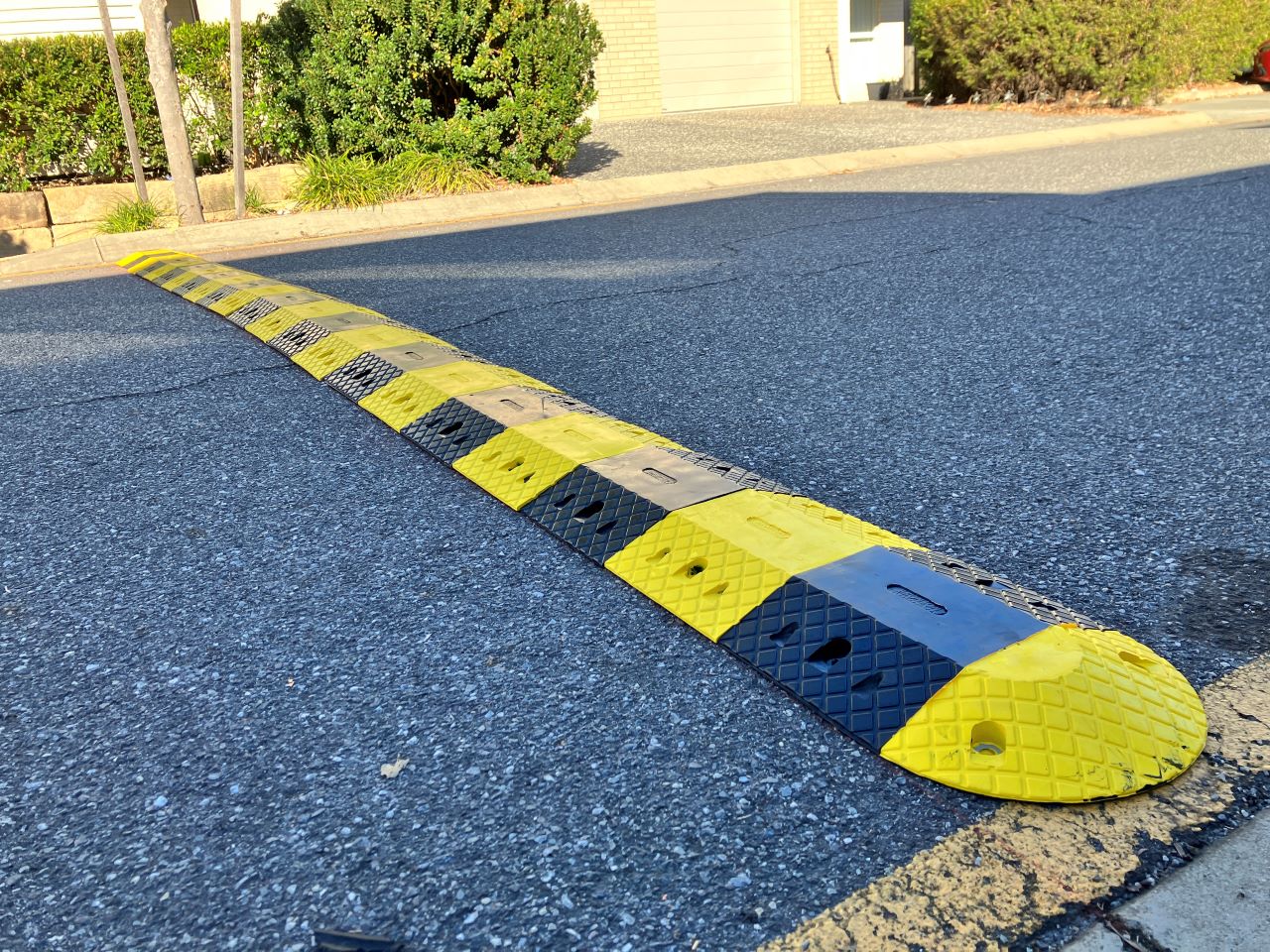
Flat-top speed humps are widely used because they comply with the Australian Standard, ensuring they deliver predictable speed reductions. The standard focuses on uniformity in design, which aids in driver recognition and consistency. However, just because a solution is the standard doesn’t mean it’s the best fit for every environment.
Pros of Flat-Top Speed Humps
- Effective Speed Control
Flat-top speed humps are designed to slow vehicles to 10-20 KPH, making them ideal for areas needing significant speed reduction. They encourage cautious driving without causing sudden braking, reducing the risk of rear-end collisions.
- Enhanced Pedestrian Safety
With a steeper approach angle and a flat top surface, these humps provide a significant barrier for vehicles to cross. They’re commonly installed in shopping centres and near schools to improve pedestrian safety.
- Durability and Cost-Effectiveness
Made from rubber or hard plastic, flat-top humps are built for long-term use with minimal maintenance, making them a budget-friendly option for councils and private managers.
- Visibility
Their yellow and black colouring and reflective markings make flat-top speed humps highly visible, helping drivers to reduce speed well in advance.
Cons of Flat-Top Speed Humps
- Comfort Concerns for Daily Users
While flat-top speed humps are effective, they can still cause discomfort for residents who drive over them daily. Even at low speeds, the experience can be jarring, particularly in smaller vehicles.
- Aggressiveness in Commercial Areas
In shopping centres and service stations, the harsh impact of flat-top speed humps can deter customers who are looking for a more comfortable drive. This concern often leads to frustration, which may discourage repeat visits.
- Noise Levels
Flat-top speed humps can generate noticeable noise, especially when larger vehicles like delivery trucks or vans pass over them. This noise can be disruptive in residential areas or quiet commercial settings.
- Space and Aesthetics
Flat-top humps are harder to cross, which might be challenging in tight or aesthetically sensitive areas. As more effort or drive is required to cross these steeper speed humps it can be a danger in these tighter and busier car parking areas.
Rounded-Top Speed Humps: A Better Alternative in Some Cases
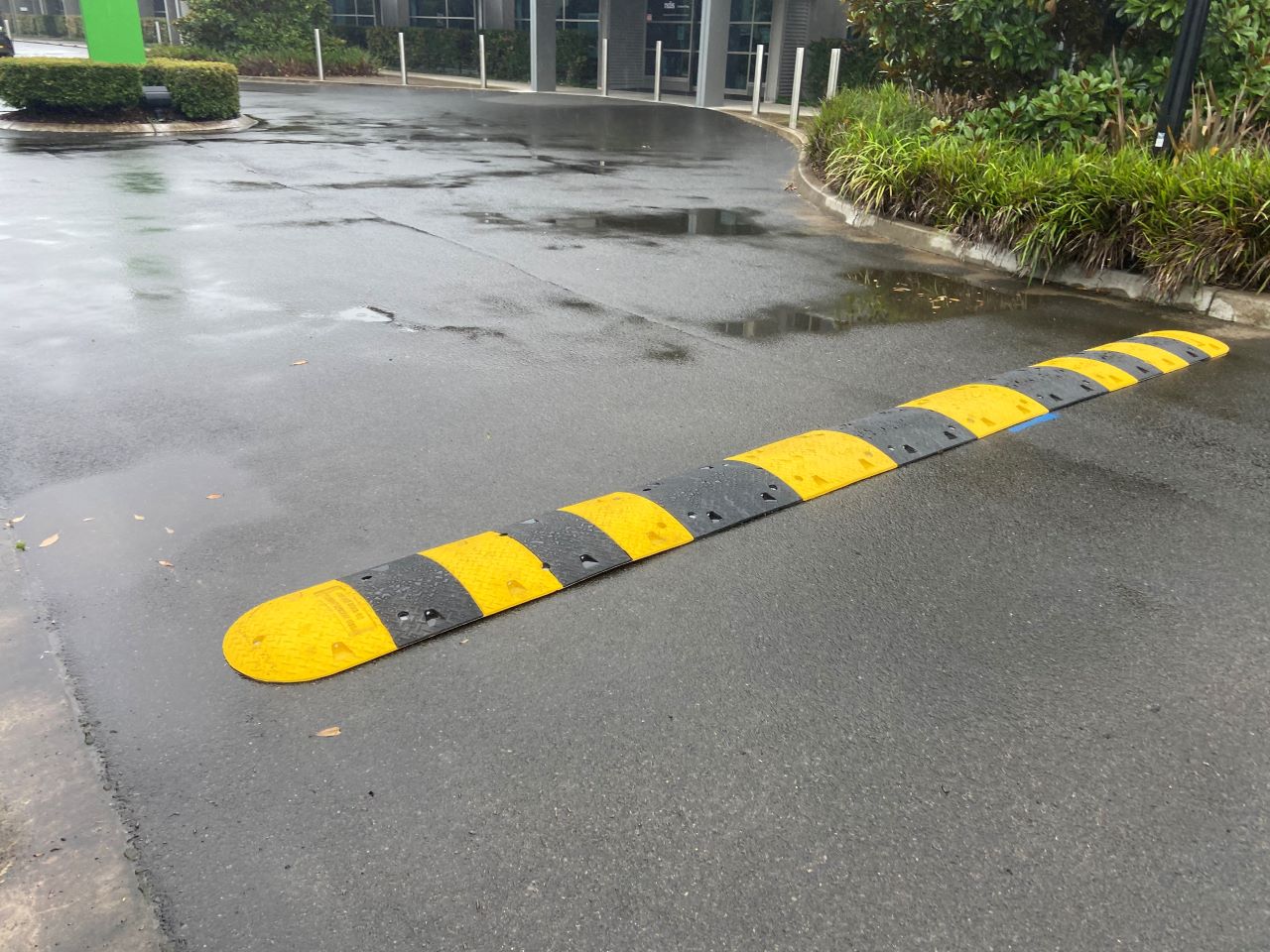
Rounded-top speed humps, which have a gentler curve than the flat-top design, can offer a less aggressive solution for slowing traffic. They’re often chosen for environments where comfort, aesthetics, and minimal noise are top priorities.
Pros of Rounded-Top Speed Humps
- Smoother Ride for Frequent Users
The gradual rise and fall of rounded-top speed humps provide a more comfortable experience for drivers, making them an excellent choice for residential areas. They slow traffic without causing the jarring impact associated with flat-top designs.
- Reduced Noise
Rounded-top speed humps are quieter because they encourage a gentler approach and exit, minimizing the noise impact from suspension and tyres. This is ideal for locations close to residences or in quiet commercial settings.
- Less Aggressive, Yet Effective
These humps still effectively reduce speed to safe levels, but without the harshness that can deter customers in commercial areas. This balance between safety and comfort makes them a better fit for places like shopping centres and service stations.
- Still Highly Visible
Rounded-top speed humps are designed with bright yellow and black colouring, along with reflectors, ensuring they remain highly visible to drivers. Despite their softer visual presence, they effectively catch attention without being as intrusive, making them suitable for settings where aesthetics matter.
Cons of Rounded-Top Speed Humps
- Not Always Standard-Compliant
Rounded-top humps may not always meet the requirements set by Australian standards for public roads, limiting their use in certain applications.
- Less Predictable Speed Control
They may not reduce speeds as consistently as flat-top humps, especially in areas with heavy or fast-moving traffic.
Choosing the Right Speed Hump for Your Needs
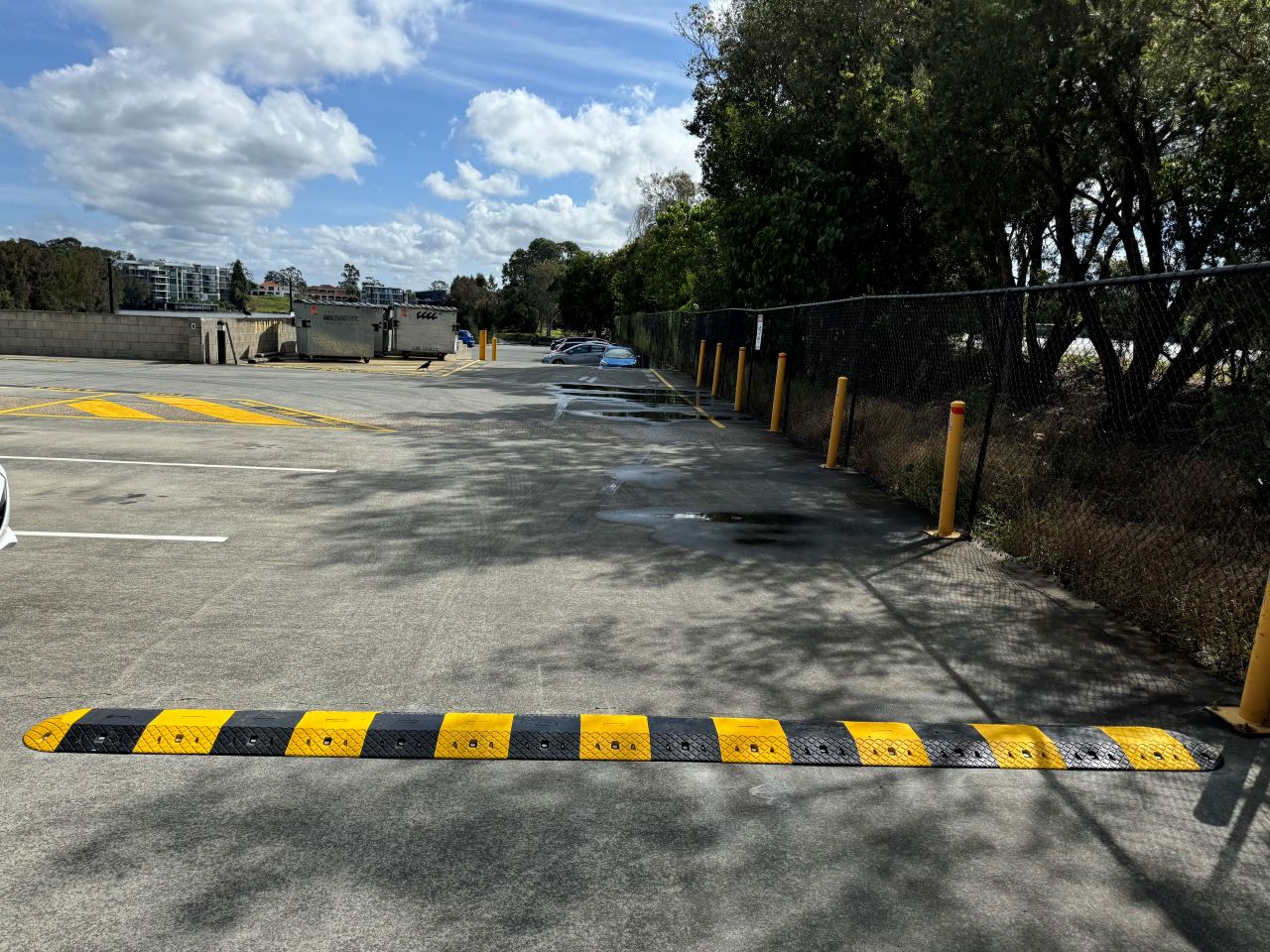
When it comes to selecting a speed hump, understanding your environment is key. Flat-top speed humps remain the Australian standard for good reason—they provide effective speed control. However, in environments where comfort and aesthetics are more critical—like residential complexes, shopping centres, and service stations—rounded-top speed humps can be a better fit. They offer a smoother ride, reduced noise, and maintain a more welcoming atmosphere for residents and customers alike.
Although you will see plenty of rounded top speed humps around, made from rubber, concrete and asphalt, it is always best to first check your local council regulations and strata bylaws before choosing to install the Round top speed humps.
The Takeaway
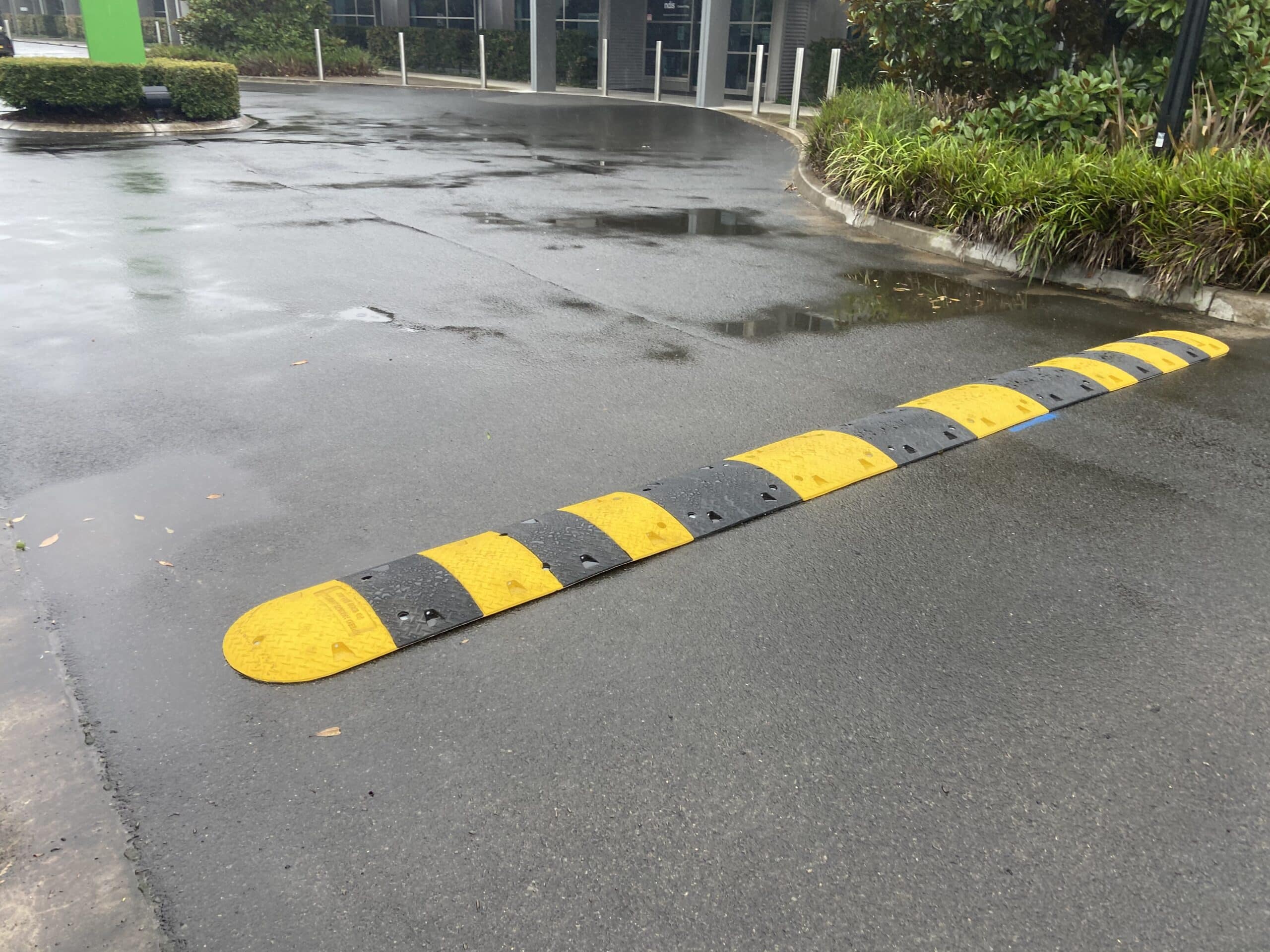
Not all speed humps are created equal. While flat-top speed humps meet regulatory standards and are a proven solution for traffic calming, they can sometimes be too aggressive for specific settings. Rounded-top humps present a valuable alternative in environments where daily comfort and aesthetics are a priority. Before making a decision, consider the daily users, the noise impact, and the overall environment. If you need guidance on the best speed hump for your property, get in touch—we can help you find the perfect balance between safety and comfort.

